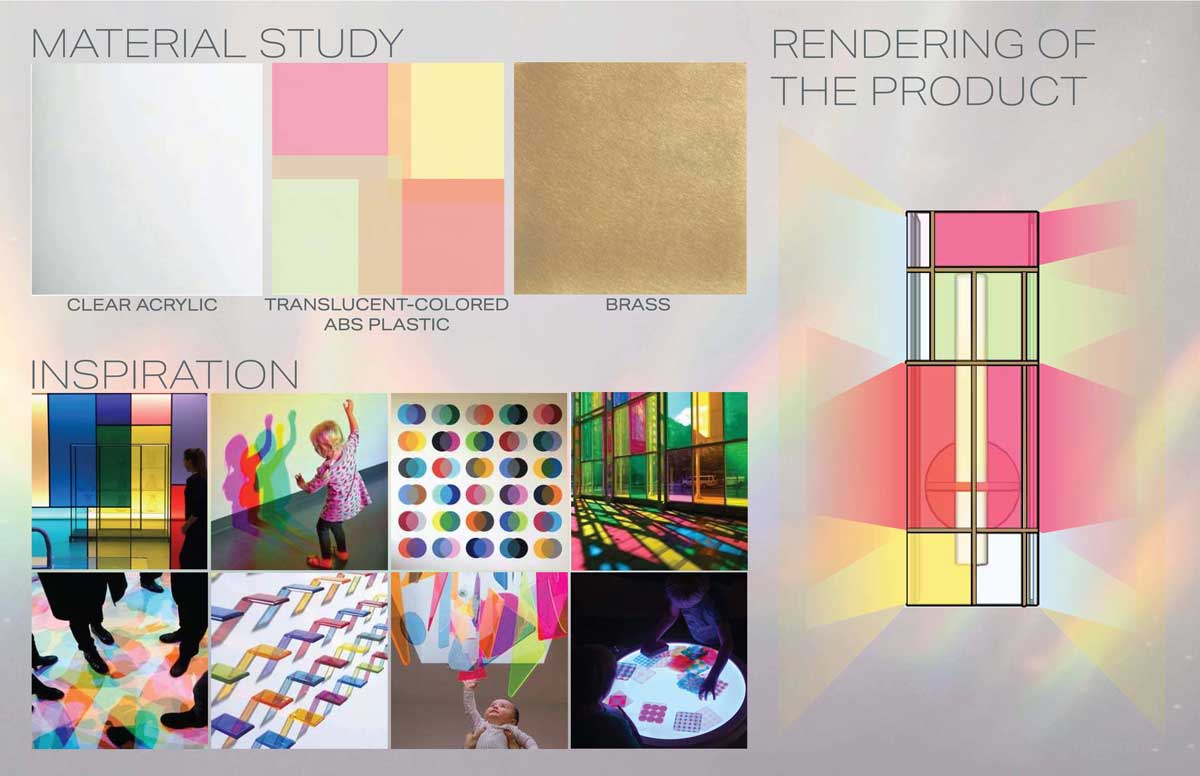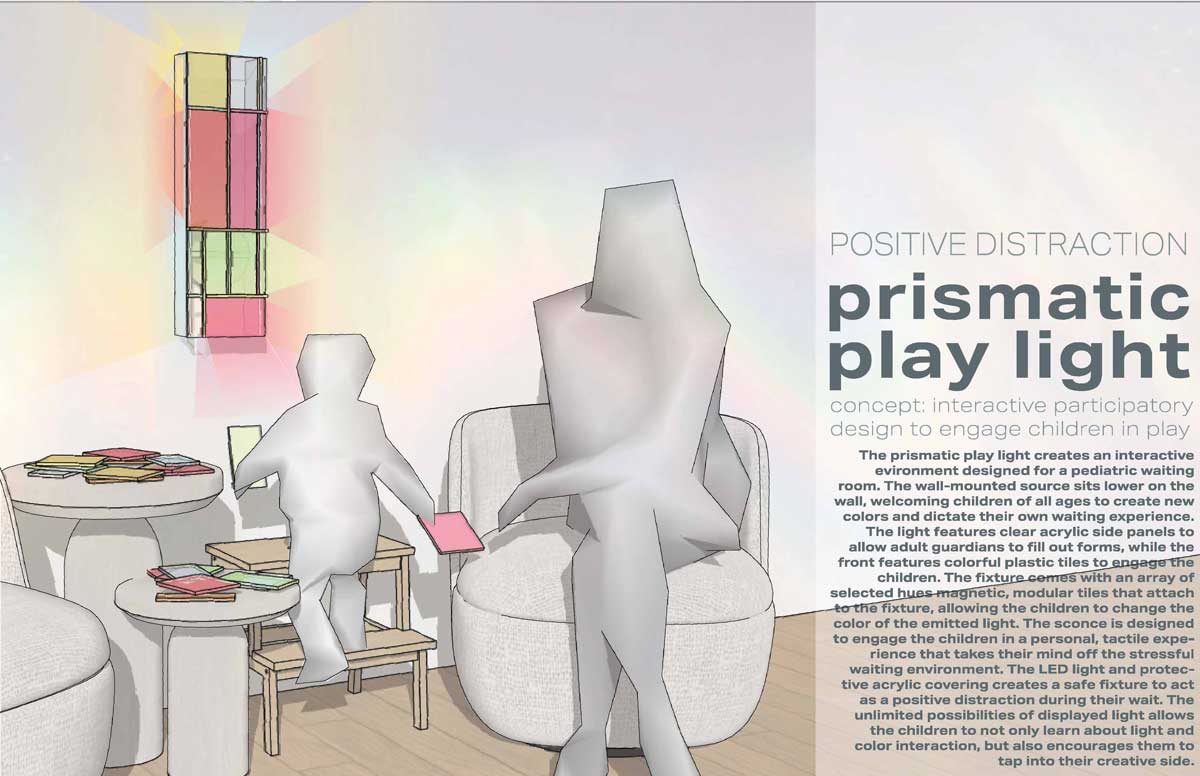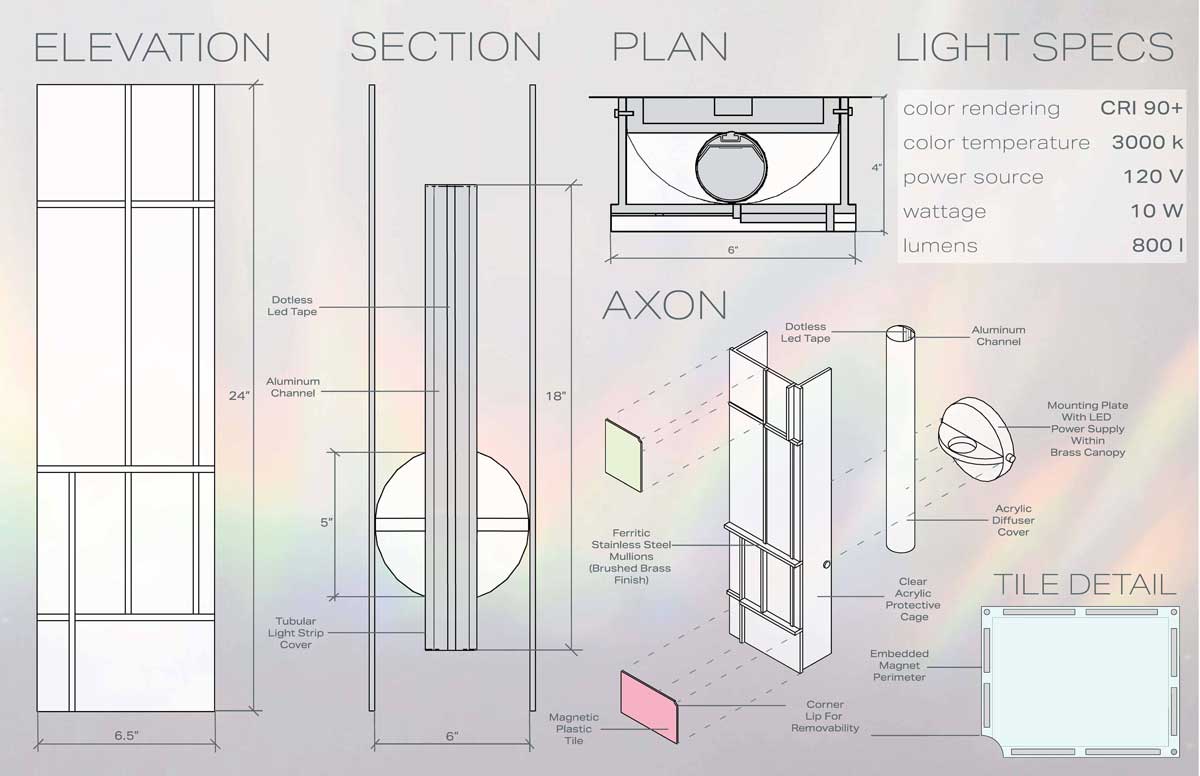2024 graduate awarded Citation for Presentation in the 2024 Robert Bruce Thompson Annual Student Light Fixture Design Competition
Anna Martin, B.A. in Architecture received the award in May.
2024 graduate awarded Citation for Presentation in the 2024 Robert Bruce Thompson Annual Student Light Fixture Design Competition

Anna Martin, a 2024 graduate of Miami University’s Bachelor of Arts in Architecture program, was awarded Citation for Presentation in the 2024 Robert Bruce Thompson Annual Student Light Fixture Design Competition in May.
The national competition challenged students to design a custom light fixture for a major healthcare organization. The goal was for lighting to “create an environment in pediatric clinic waiting rooms that is comfortable, unintimidating, and an interesting/engaging space for children.”
Martin’s winning design for a wall sconce, “Prismatic Play Light,” brings color and interaction to the waiting room environment. The rectangular light fixture is intended to be mounted lower on the wall within reach of children. Clear acrylic panels on the side of the light fixture provide warm white light for adult guardians to read or fill out forms, while colorful magnetic tiles on the front form an illuminated play station. The design invites children to pick up and place tiles of different shapes and hues.

“The design is intended to engage children in a personal, tactile experience that takes their mind off the stressful waiting environment,” Martin wrote in her concept statement.
Martin’s process began with research to understand the health benefits of positive distractions, design features that are strategically applied within healthcare environments to divert attention and reduce stress and anxiety for patients and families. Art, color, texture, sound, lighting, spatial arrangements, social interactions, access to nature, play, and interaction are all tools that designers can employ to enhance engagement and support well-being in an environment. Martin’s Prismatic Play Light concept also addresses the power of active participation in learning.
“The unlimited possibility of displayed light allows the children to not only learn about light and color interaction but also encourages them to tap into their creative side,” described Martin.
The competition considers both presentation and conceptual design in the judging process. Students must demonstrate innovation and sustainable use of materials and address light distribution, visual comfort, practicality of manufacturing, ease of use, and maintenance for their fixture design.
The light fixture design project is an assignment in the ARC 414/514 Environmental Control Systems II course taught by Professor Mary Ben Bonham in the Department of Architecture + Interior Design. Miami has a history of successful entries in the competition, with architecture and interior design students winning awards in the last four consecutive years.
